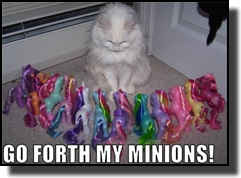 Of all the questions I get from aspiring leaders, the one that I hear the most often is, “What is your definition of a leader?”
Of all the questions I get from aspiring leaders, the one that I hear the most often is, “What is your definition of a leader?”
I’ve had many definitions over the years, but none of them have resonated with me. They range from the Forrest Gumpian:
to the more circular definition:
(Guess what a follower is?)
There are very complex definitions, like this one from Phil Blair:

Oh, my.
Some even have a whole book dedicated to defining what a leader does, usually with some odd number of required steps, like 7 Disciplines or 21 Irrefutable Laws.
It’s important to have a personal definition of leadership. A personal definition helps you develop boundaries and goals. It keeps you focus on what is important The one I use and offer for your consideration is:
A leader is someone who takes others in a direction they wouldn’t otherwise go on their own.
I love this definition because it isn’t overly complicated and says a lot in very few words. Here are three that I think are important.
1. Leaders take people on an unnatural course.
This simple phrase is what separates leaders from managers. A leader will have to see a path that is not obvious to everyone else. It’s not natural for those on the team, otherwise they would have done it themselves. It may not seem natural to the leader, often leading to sleepless nights wondering whether he is making the right bet or not.
I often hear a first time manager say to their teams, “I want to remove the obstacles in your way,” as if their job is like the guy who sweeps the ice just ahead of the stone in a curling match. Removing obstacles is necessary, but this is management, not leadership. It is spotting the unnatural course, not clearing the way, that separates the two. Leading implies you know where they need to be.
2. Leaders create tension.
 Unnatural courses, by definition, aren’t natural. We humans have defense mechanisms to prevent us from doing unnatural things. We question, resist, procrastinate, attack, undermine, ignore, and sometimes just give up. These are all responses that create a tension between a leader and their team.
Unnatural courses, by definition, aren’t natural. We humans have defense mechanisms to prevent us from doing unnatural things. We question, resist, procrastinate, attack, undermine, ignore, and sometimes just give up. These are all responses that create a tension between a leader and their team.
Tension is the single best indicator that demonstrates you are leading. If you ain’t feelin’ it – it ain’t happenin’. Tension, if managed properly, is healthy. Without tension, leaders would be allowed to go unchecked into uncharted waters. Managing this tension is a topic for another day, but take great comfort that the tension you are feeling is natural and necessary. Most importantly, if this tension is not what you signed up for, you may want to reconsider leading.
3. Leaders can be anyone
Nothing in my definition said that leaders had to be the manager, nor did it even imply that someone is the designated leader. Some of the best leadership comes from within the pack. If you are taking the group in a direction it wouldn’t otherwise go, you are a leader, regardless of what is on your business card.
Keep in mind, if you successfully lead from the pack, it is likely someone will eventually recognize your talent and want to put you in to a more formal leadership role. Companies seem to think that leaders need to be recognized and put out in front of others. Probably because our own egos require that as well.
Note that I made no qualitative judgement about the direction. There are both good leaders and bad leaders. Good leaders take others to good places, bad leaders to bad places. The definition still holds.
If you are a leader, make sure you know why. Start with a good definition that works for you today. It will likely change over time, usually refining itself into something that truly resonates with you and your beliefs.
Try starting with this one and see where it takes you.






